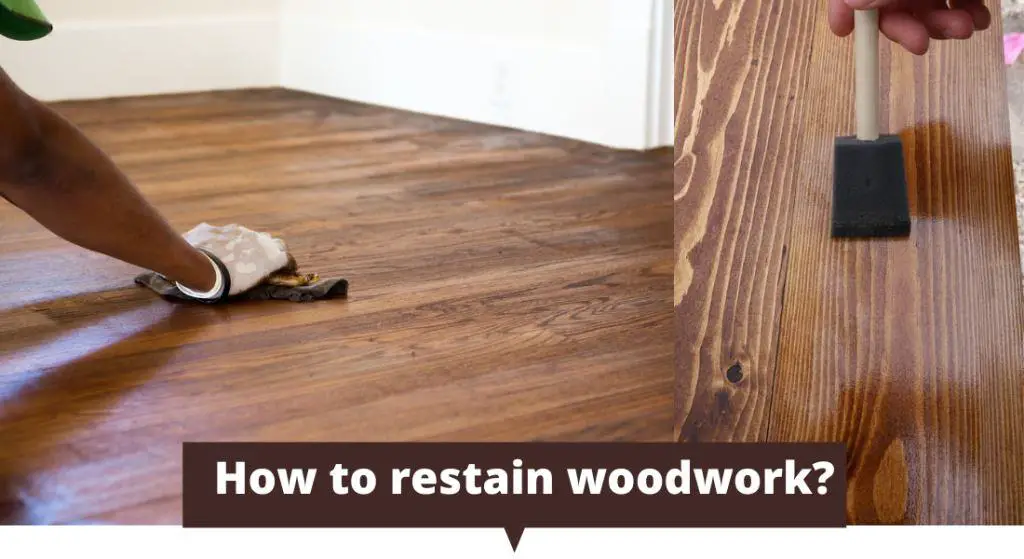One of the most common problems that people face when restoring woodwork is how to restain it without stripping off the existing finish. Restaining woodwork has become a popular way to update the look of furniture and other wooden objects without having to put in a lot of effort or money. The good news is that there are several simple techniques you can use to restain woodwork without stripping the existing finish. This article will discuss how to restain woodwork without stripping the existing finish and provide helpful tips for a successful project.
How to Restain Woodwork?
1. Start by cleaning the wood:
Clean the wood surface with a soft cloth and mild detergent in order to remove any dirt, dust, or grease. Once the wood is clean and dry, you can begin the staining process.
Apply a pre-stain wood conditioner to the surface of the woodwork with a clean paintbrush or cloth. This will help even out the stain color and reduce blotching on open-grain wood. Allow it to dry completely before proceeding with staining.
2. Sand the area lightly:
Sand lightly with very fine grit sandpaper until it is smooth and free of blemishes. Be sure to wear an appropriate face mask while doing this as well as safety glasses for eye protection.
3. Preparing the new stain:
Pour some of the new stains into another container in case you want to mix different colors together or create a custom color blend. Shake the can vigorously for several minutes before use to make sure that all of its contents are evenly mixed together. If using multiple cans of stain, make sure they are from the same manufacturer and batch.
4. Applying the new stain:
Apply a thin, even layer of the new stain with a paintbrush or a clean cloth to all surfaces of the wood, including any nooks and crannies that might be harder to reach. Allow it to dry completely before making any further adjustments.
5. Finishing touches:
After the newly applied stain has dried, you can decide if you want to add more layers or not. If you do, make sure they are evenly applied and allow each coat time to dry completely before applying another one on top of it. Once you have reached your desired level of staining, apply a clear finishing coat such as polyurethane for extra protection and long-lasting durability.
By following these steps, you can easily and successfully restain woodwork without stripping the existing finish. This is a great way to give new life to old furniture or other wooden items without having to go through the time-consuming process of stripping off the current coat. Good luck!
FAQs:
Q: What materials do I need to restain woodwork?
A: You will need sandpaper, a tack cloth, protective gloves, a clean rag or brush for applying the stain, and the appropriate stain for your desired effect. Additionally, you may want to use a sealer or polyurethane finish if you plan on sealing the piece.
Q: How should I prepare the woodwork before staining?
A: The first step is to lightly sand all surfaces of the woodwork with an appropriate grit of sandpaper. This helps remove any existing stain and smooth out rough patches. Then make sure to dust off any debris left behind from sanding and wipe down the surface with a damp cloth to remove any dust particles. Finally, use a tack cloth to further clean the surface and make sure it is free of any dirt or dust particles before you start staining.
Q: How do I apply the stain?
A: Generally, it is best to apply the stain with a brush or clean rag, working in the direction of the grain. To prevent streaks, apply a thin layer of stain and then let it sit for a few minutes before wiping away any excess. After you have finished applying the stain, wait another 20-30 minutes before applying additional coats if needed. Once you are satisfied with your desired effect, let the final coat dry completely before applying a sealer or polyurethane finish.
Q: How can I make sure the finish is even?
A: To ensure an even finish, it’s important to use consistent strokes in the direction of the grain. In addition to that, be careful not to over-apply or add too many coats as this could result in a blotchy appearance. Finally, take your time and keep a steady hand when applying the stain so you don’t miss any spots.
Q: What products should I avoid when staining woodwork?
A: It is best to avoid using oil-based stains and solvents since these can damage the wood surface. Additionally, some types of paint thinners and mineral spirits may also cause discoloration or fading if used on woodwork. If in doubt, always test a small area first to make sure the product is appropriate for your project.
Although stripping the old finish is a more intensive process, it may be necessary if the wood is severely damaged or you want to change the color of the wood. If you decide to restain your woodwork without stripping it, be sure to use a quality sealant or topcoat to protect the new finish and keep it looking beautiful for years to come. Have you tried restaining your woodwork without stripping it? What tips do you have for others who might want to try this method?



















